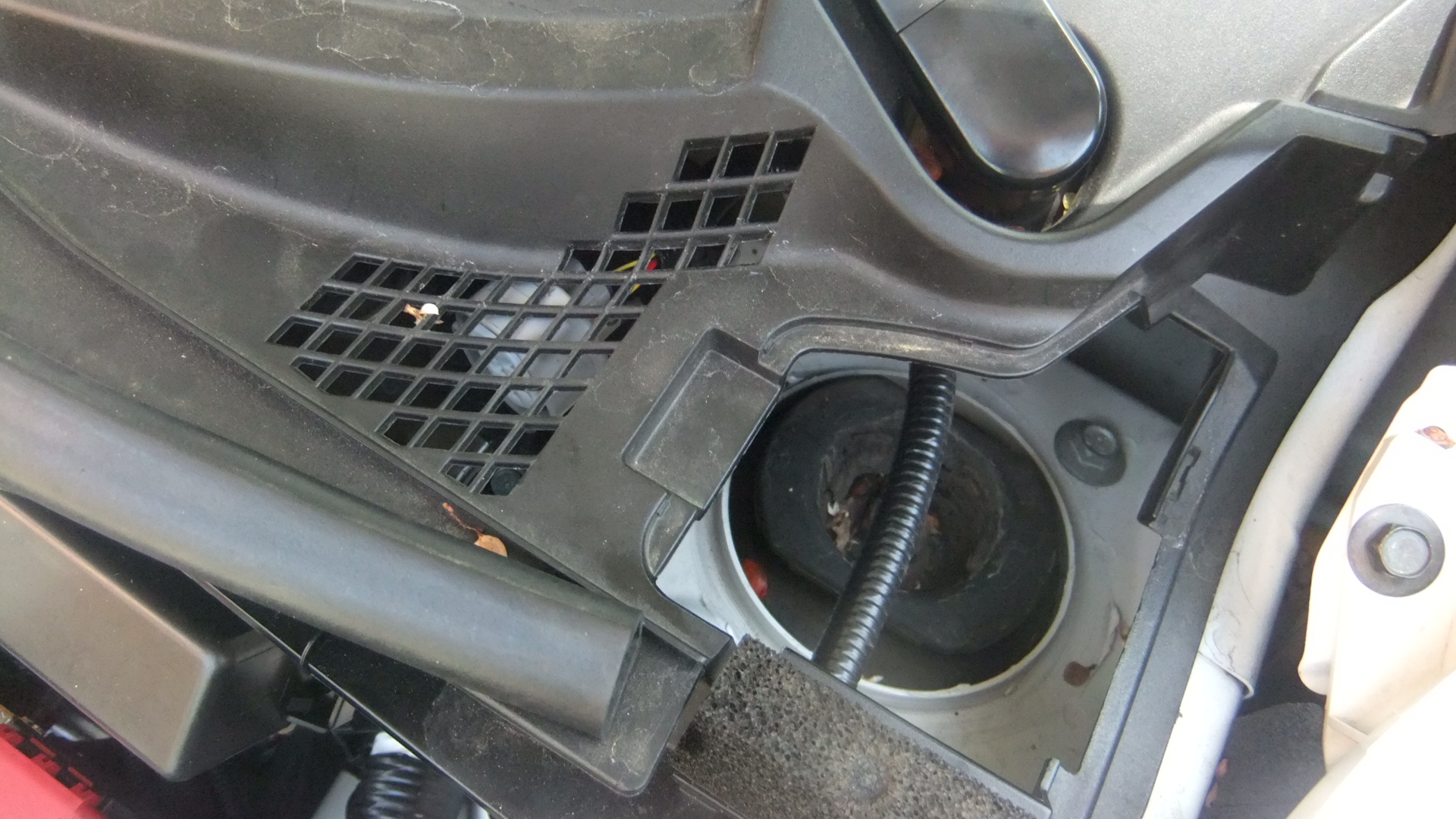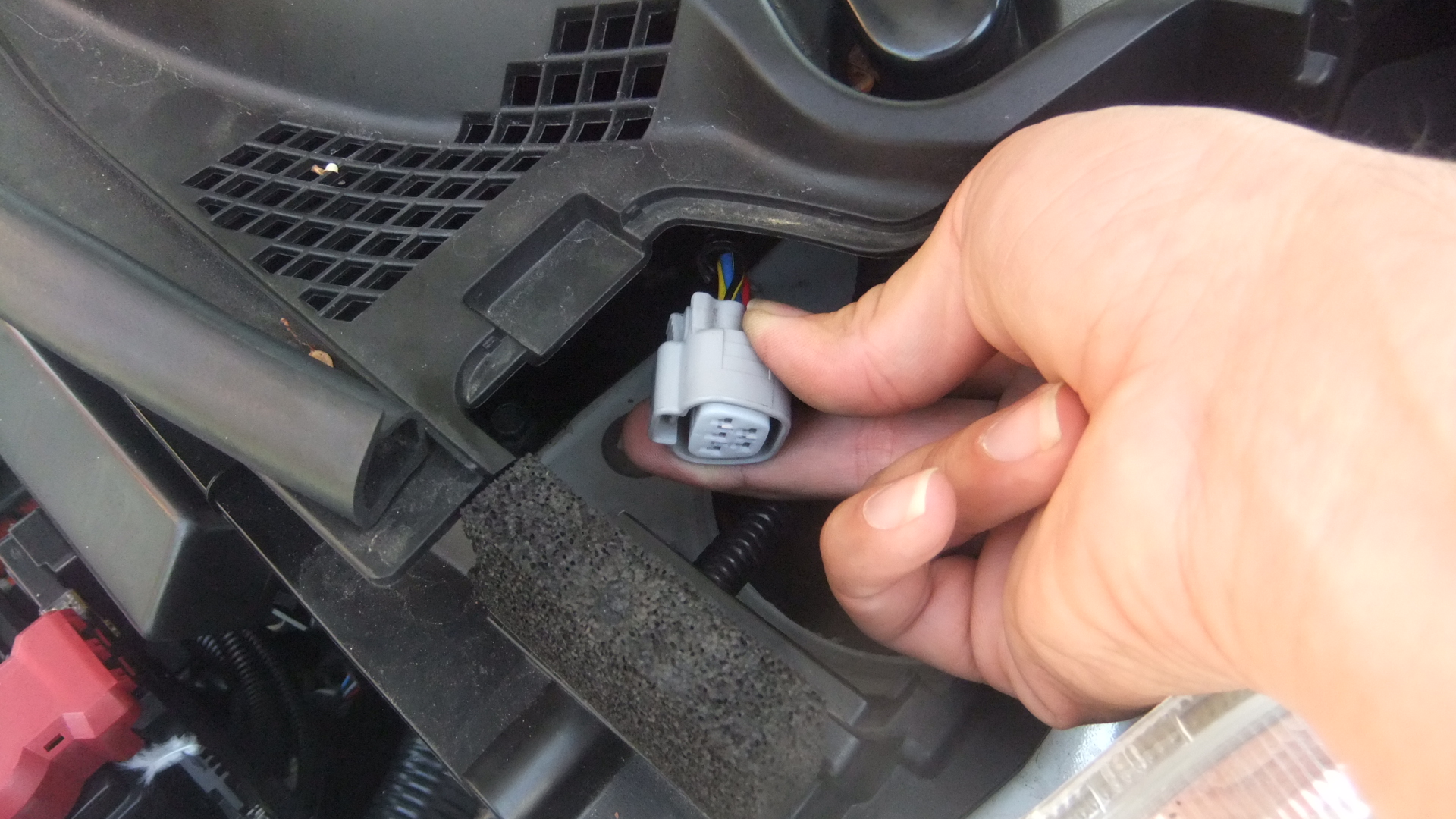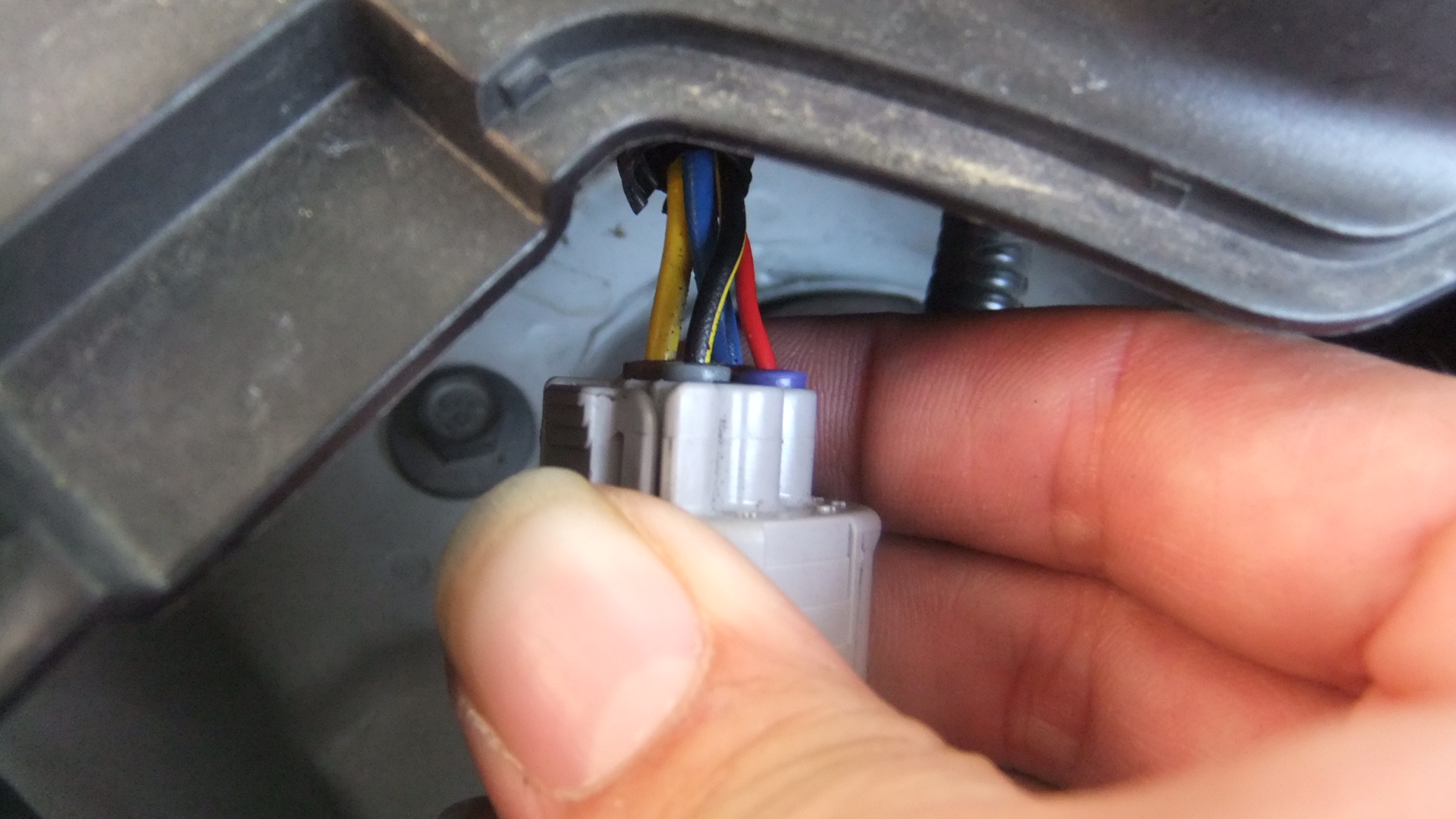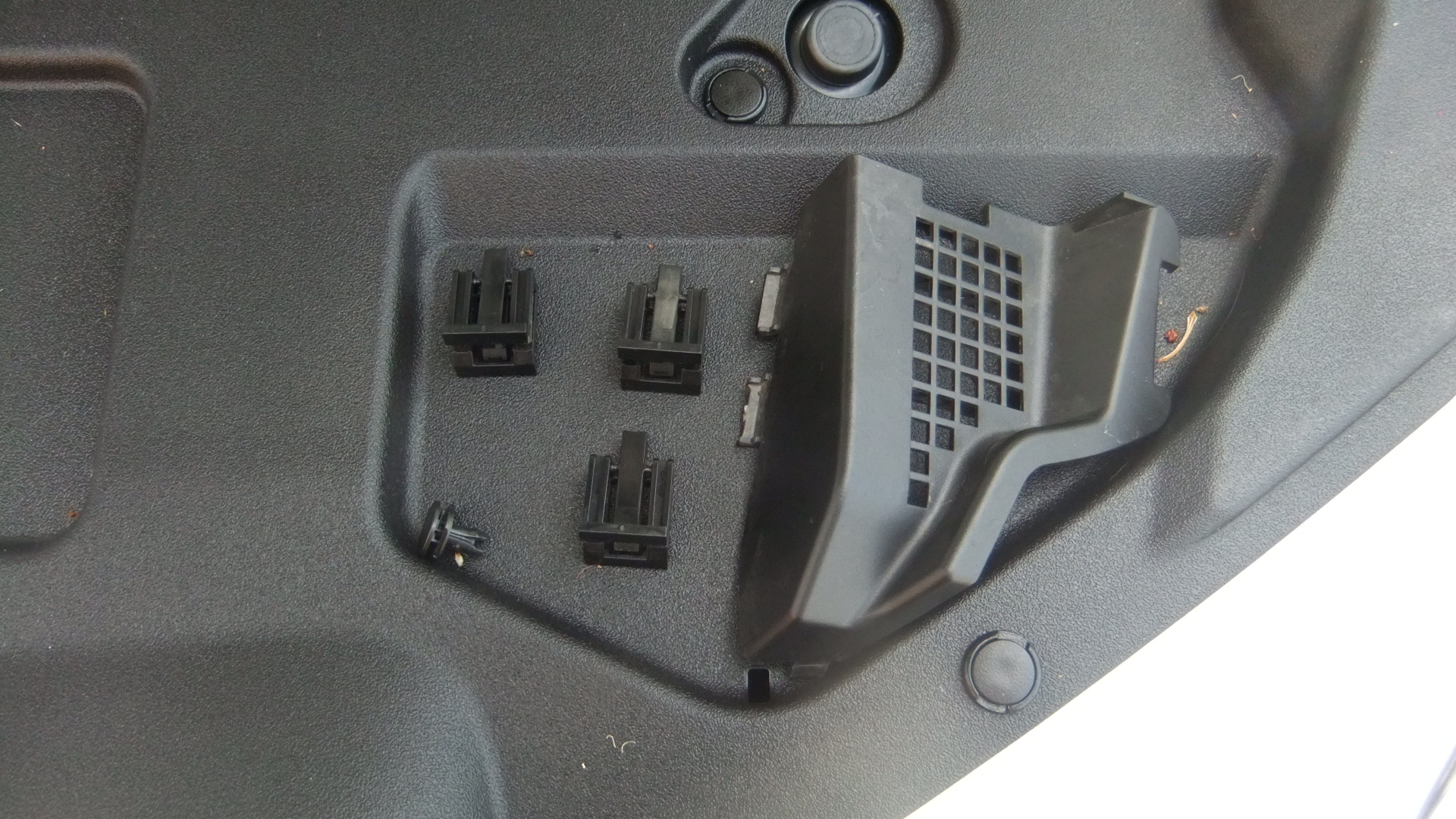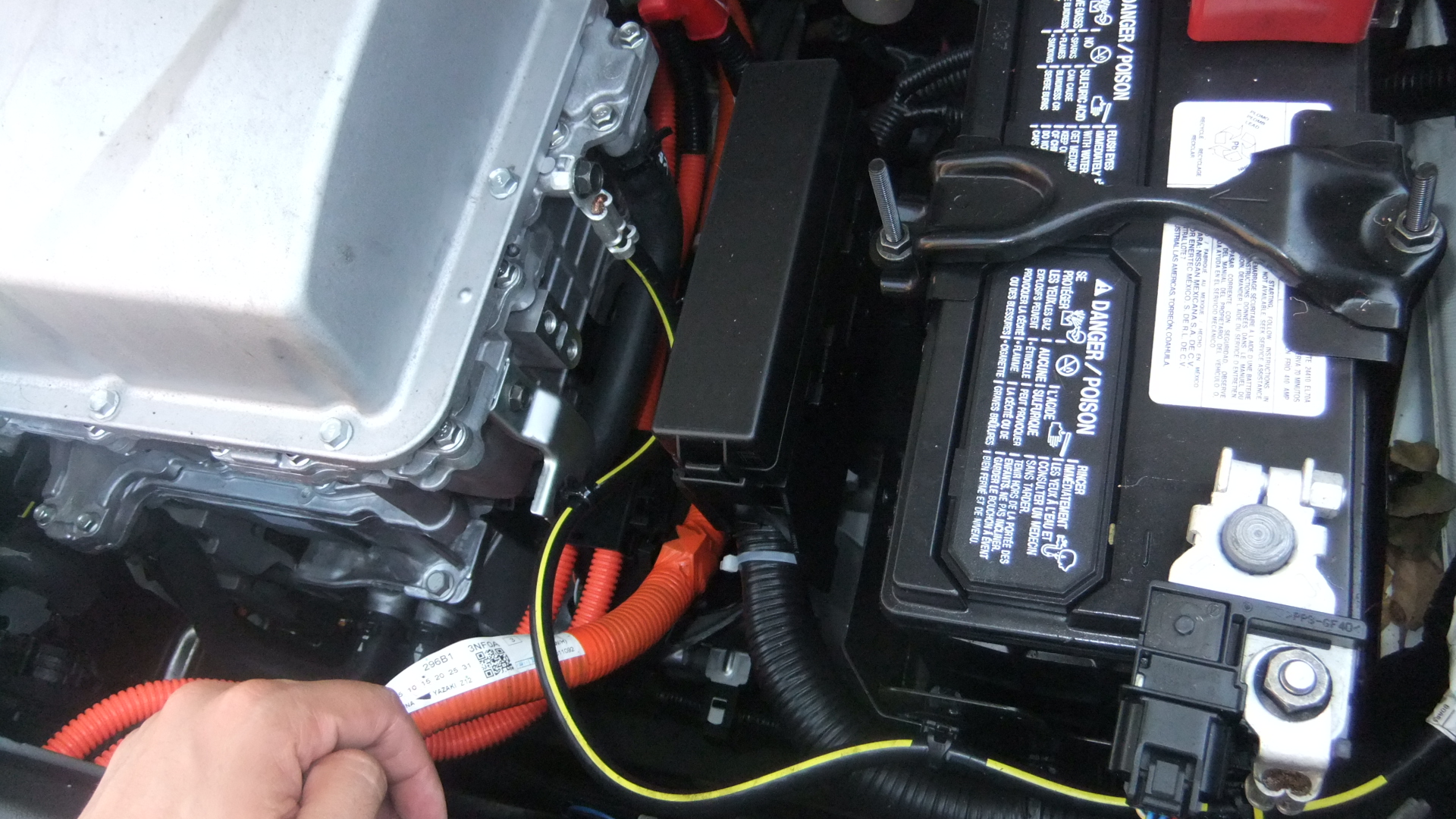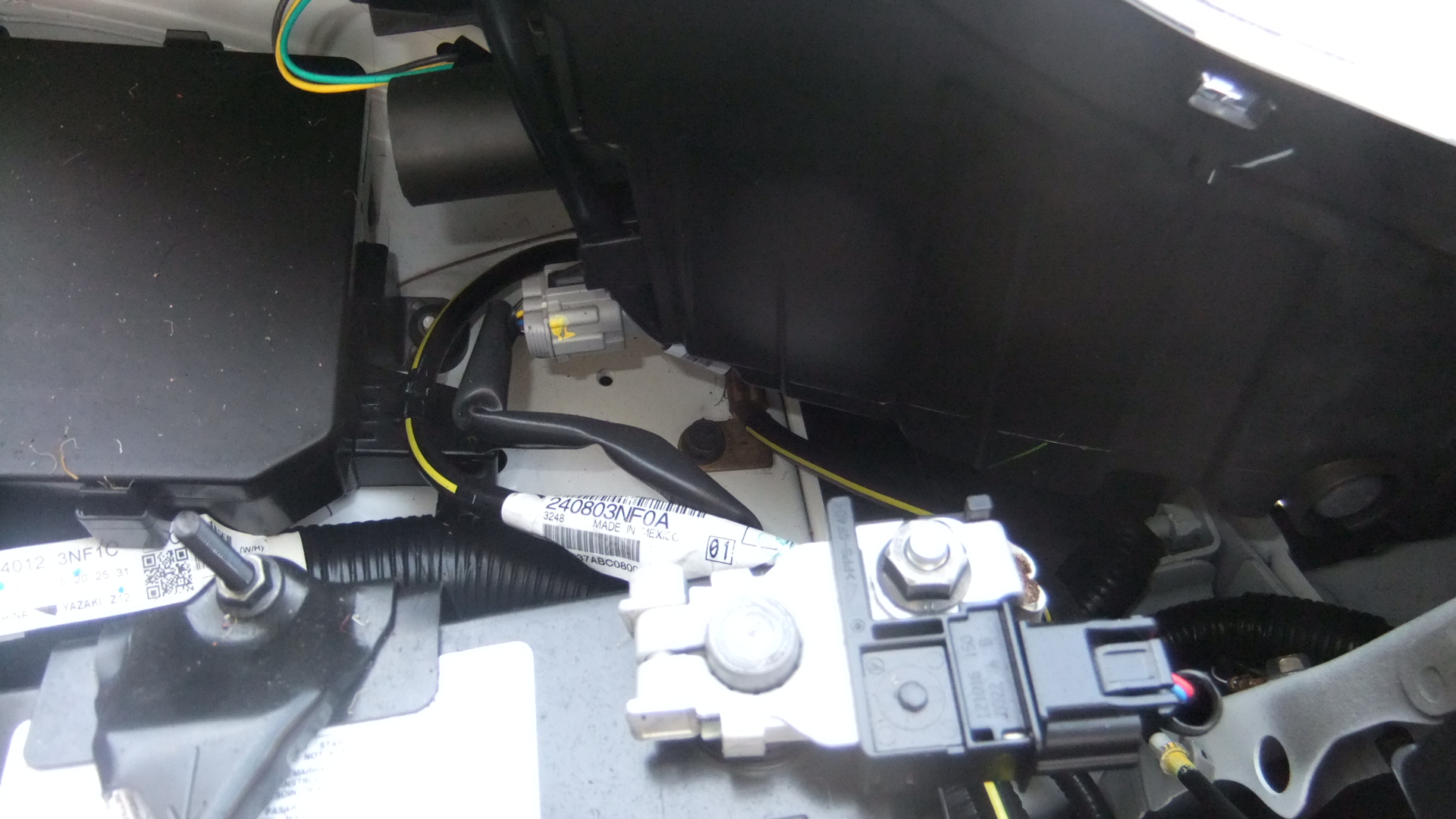NissanLeafCamper
Well-known member
Hi guys,
Just curious but what type of lead acid starter battery does the 2013 nissan leaf use? I tried to check up on mine and it has this huge clamp over the sticker which doesn't let me see. Does anyone know the specifics of it? I need the info for an inverter set up I want to try and use I'm being told that I need
I'm being told that I need
"As a general rule for each kilowatt of inverter, you need 100Ah of battery for 48V, 200Ah for 24V and thus 400Ah for 12V. This is to provide a reasonable C discharge rate, prolong battery capacity and life, to support surges and keep wiring and heat losses to a sensible level. "
I want to use an induction cooker from amazon that uses 1800 watts and a blender seperately (Not at the same time). I just want to make sure that if I get a pure sinewave inverter it will work with the lead acid battery the leaf has .
.
Oster Blender
120 volts
375 watts
25-60 hz max freq
A.C. Only
made in mexico? at least not chinese
Induction Cooktop (from Amazon)
DUXTOP 1800-Watt Portable Induction Cooktop Countertop Burner 9100MC
15 power levels 200W, 300W, 400W, 500W, 600W, 700W, 800W, 900W, 1000W, 1100W, 1200W, 1300W, 1500W, 1600W, 1800W;
Product Built to North American Electrical Standards, 120V 60Hz AC
My guess is that I will need at least a 1800 watt pure sine inverter? Will it be able to handle the 'surge loads' from the induction cooktop and the blender? Not at the sametime I am sure. so used indiividually.
Perhaps?
http://www.amazon.com/Xantrex-PROWatt-Inverter-Model-806-1220/dp/B002LGEMOQ/
My question was prompted due to a review in that inverter which states... and I quote:
""I see a few complaints in the reviews about having trouble with high-load applications of this inverter. I bought one about a year ago, with the intent of using it to get solar-powered air conditioning in my RV. I made it work, eventually, and the problems I encountered had nothing to do with the inverter (which supplied 1500 watts sustained load and handled the surge of starting the AC, once I got everything else working).
First of all, wiring: Everything will tell you that 4 gauge should be more than big enough: Not even close. I tried 4-gauge. Then I tried 0-gauge. Then I tried making the wire runs shorter. Then I started doubling up wire runs in parallel. By the time I was through, my battery interconnects were double and triple 4-gauge in parallel, and the connection to the inverter (coming from the center battery of 5) was 000-gauge (also known as 3/0). Connecting that to the terminals on the inverter required taking an industrial terminal block normally used for substation wiring and drilling a 3/8" hole to connect it to the terminals. Finally I had something that wouldn't drop 2+ volts over the wires when drawing 125 amps. When they say 4 gauge can pass 200+ amps, they mean that it won't melt the wire, not that it will give you a usable voltage.
On top of that, batteries: Lead-acid batteries may say they can deliver huge numbers of amps, but not without huge voltage drops. In practice, for every amp you're drawing you want at least 2 pounds of battery (so, minimum 4 size 27 batteries to deliver 125 amps needed for 1500 watts). Try to power your space heater off something you can pick up assisted, and you're just going to get a lot of annoying beeps.
And don't forget that after you've drawn off half of the amp hours theoretically available in your batteries, your *maximum* voltage will have dropped to around 11.8 (so battery load and wiring losses will be working from a lower baseline). With 5 type 27's, I could run the original rooftop air conditioner for no more than 1.5 hours before they were too far down to provide 11.0 volts under load. So I figured out a way to mount a modern, high-efficiency unit that provided the same cooling for half the power.
The point here is that with a really big inverter, you're pushing 12V right to the absolute limits, and you have all *kinds* of weak points that will keep your system from working properly. These are really intended for big residential solar systems with batteries in the thousand-plus pound range. This inverter works *fantastically* well, now that the rest of the system is properly supporting it, but even for an experienced electronics tech getting all that arranged properly was quite an education."
Just curious but what type of lead acid starter battery does the 2013 nissan leaf use? I tried to check up on mine and it has this huge clamp over the sticker which doesn't let me see. Does anyone know the specifics of it? I need the info for an inverter set up I want to try and use
"As a general rule for each kilowatt of inverter, you need 100Ah of battery for 48V, 200Ah for 24V and thus 400Ah for 12V. This is to provide a reasonable C discharge rate, prolong battery capacity and life, to support surges and keep wiring and heat losses to a sensible level. "
I want to use an induction cooker from amazon that uses 1800 watts and a blender seperately (Not at the same time). I just want to make sure that if I get a pure sinewave inverter it will work with the lead acid battery the leaf has
Oster Blender
120 volts
375 watts
25-60 hz max freq
A.C. Only
made in mexico? at least not chinese
Induction Cooktop (from Amazon)
DUXTOP 1800-Watt Portable Induction Cooktop Countertop Burner 9100MC
15 power levels 200W, 300W, 400W, 500W, 600W, 700W, 800W, 900W, 1000W, 1100W, 1200W, 1300W, 1500W, 1600W, 1800W;
Product Built to North American Electrical Standards, 120V 60Hz AC
My guess is that I will need at least a 1800 watt pure sine inverter? Will it be able to handle the 'surge loads' from the induction cooktop and the blender? Not at the sametime I am sure. so used indiividually.
Perhaps?
http://www.amazon.com/Xantrex-PROWatt-Inverter-Model-806-1220/dp/B002LGEMOQ/
My question was prompted due to a review in that inverter which states... and I quote:
""I see a few complaints in the reviews about having trouble with high-load applications of this inverter. I bought one about a year ago, with the intent of using it to get solar-powered air conditioning in my RV. I made it work, eventually, and the problems I encountered had nothing to do with the inverter (which supplied 1500 watts sustained load and handled the surge of starting the AC, once I got everything else working).
First of all, wiring: Everything will tell you that 4 gauge should be more than big enough: Not even close. I tried 4-gauge. Then I tried 0-gauge. Then I tried making the wire runs shorter. Then I started doubling up wire runs in parallel. By the time I was through, my battery interconnects were double and triple 4-gauge in parallel, and the connection to the inverter (coming from the center battery of 5) was 000-gauge (also known as 3/0). Connecting that to the terminals on the inverter required taking an industrial terminal block normally used for substation wiring and drilling a 3/8" hole to connect it to the terminals. Finally I had something that wouldn't drop 2+ volts over the wires when drawing 125 amps. When they say 4 gauge can pass 200+ amps, they mean that it won't melt the wire, not that it will give you a usable voltage.
On top of that, batteries: Lead-acid batteries may say they can deliver huge numbers of amps, but not without huge voltage drops. In practice, for every amp you're drawing you want at least 2 pounds of battery (so, minimum 4 size 27 batteries to deliver 125 amps needed for 1500 watts). Try to power your space heater off something you can pick up assisted, and you're just going to get a lot of annoying beeps.
And don't forget that after you've drawn off half of the amp hours theoretically available in your batteries, your *maximum* voltage will have dropped to around 11.8 (so battery load and wiring losses will be working from a lower baseline). With 5 type 27's, I could run the original rooftop air conditioner for no more than 1.5 hours before they were too far down to provide 11.0 volts under load. So I figured out a way to mount a modern, high-efficiency unit that provided the same cooling for half the power.
The point here is that with a really big inverter, you're pushing 12V right to the absolute limits, and you have all *kinds* of weak points that will keep your system from working properly. These are really intended for big residential solar systems with batteries in the thousand-plus pound range. This inverter works *fantastically* well, now that the rest of the system is properly supporting it, but even for an experienced electronics tech getting all that arranged properly was quite an education."

